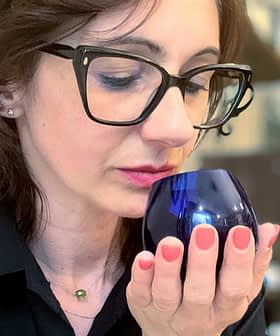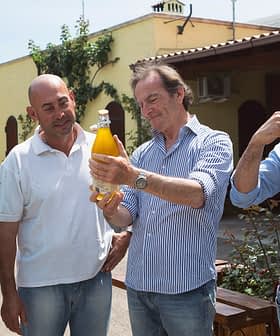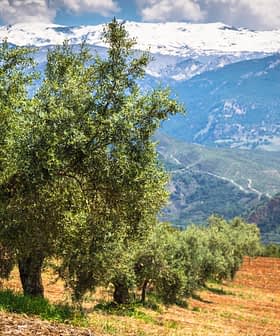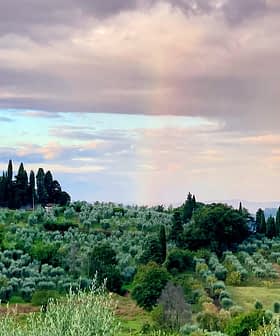Sperlonga
Sperlonga is a town in Italy located between Rome and Naples, resembling Greece with its white buildings, and is part of the Riviera di Ulisse. The town is known for its medieval charm, olive trees, and proximity to the grotto where Emperor Tiberius’s villa was discovered, featuring sculptures depicting scenes from the Odyssey. Gaeta, another town in the Riviera di Ulisse, is famous for its Gaeta olives, grown in Itri and known for their late ripening and use in various dishes and olive oil production.

Sperlonga is between Rome and Naples, and about an hour’s drive from each. Because of its white and cream colored buildings it looks as if it could be in Greece. It’s one of four towns that make up the Riviera di Ulisse. Homer is vague about where Ulysses or Odysseus travelled, preferring to describe action and adversaries, so whether Homer had this bit of Tyrrhenian coast in mind, it cannot be known.
The medieval town is high up on a rocky outcrop, overlooking the sea, with sand beaches to the north and south. The newer parts of the town are below and while the architecture is not as nice as in the old, the area is well planted and this helps soften the lines. There are olives in traffic islands, at the rotary, and lining some streets. Sometimes they’re pruned into decorative lollipop shapes, but mostly they’re left to their natural habit. There are lots of flowering plants in both the new and old towns – cascades of bougainvillea, light blue plumbago, deep blue morning glories, and great drifts of yellow lantana – all of which look particularly good against Sperlonga’s white walls.
Gaeta neighbors Sperlonga, just to the south, and is another of the Riviera di Ulisse towns. Gaeta is famous for its table olives, which have recently received a DOP designation. For an olive to be considered a Gaeta olive, it must be grown in Lazio, but not necessarily in Gaeta. In fact, most of the Gaeta olives are grown at Itri, and Itri gives its name to the cultivar Itrana, the only cultivar permissible in making Gaeta olives. The Itrana olive is unusual in that it ripens very late. It ripens in March and April, whereas the vast majority of Italy’s olives are harvested in November. They are considered ripe once they have a waxy white coating, like the bloom of a plum. In local dialect, this coating is called the panno or cloth.
After ripening and within 24 hours of harvest, they’re covered in unsalted water for a month, then in brine for a further five months before they’re ready to be eaten. Some Itrana olives are harvested before they’re ripe, while they’re still pale in color, and then cured. They are less costly than Gaeta olives. Itrana olives are also used for making olive oil. Colline Pontine is the geographic designation and the oil is medium fruity and described as having a tomato flavor by some.
Sperlonga’s bars serve the wine colored Gaeta olives in little bowls at apperitivo hour and restaurants make use of the olives in many pasta dishes, fish dishes, as well as on pizzas. The town of Sperlonga has a website with a section giving recipes for what sound, and look, like excellent dishes. While the recipes are only in Italian, a moderately experienced cook, with a dictionary or a translating application, should be able to follow along.
Looking south from the town there’s a grotto, or cave, and from a distance it looks like a dark triangle. Spelunca is the Latin word for cave, and Sperlonga takes its name from this very spelunca. It is about half an hour’s walk along the sandy beach to the cave. It can be seen through a metal fence, or one can walk up the road (before the cave) which leads to entrance to the complex. The area by the cave was excavated in the late 1950s and a vast villa, said to belong to the Emperor Tiberius (42 BC — 37 AD), was discovered. Tiberius can definitively be associated with the place since there are descriptions of a deadly cave-in at the grotto in 26 AD, when Tiberius was present, and also unhurt. The space is cool even on hot days, and the sun bouncing off the water creates beautiful flickers of light on the ceiling of the cave. The originality of the place — and not least the idea of dining on a platform built above the water with the backdrop of the cave — is close to being a dream.
The grotto housed sculptures that figured scenes from the Odyssey, and there are fragments and reconstructions at the museum. One of the sculpture groups figures the blinding of the Cyclops Polyphemus. This group is particularly apt for the location since the Cyclops trapped Odysseus and his men in a cave by placing a gigantic boulder at the cave’s mouth. Polyphemus kept the men in the cave, devouring two at a time until Odysseus came up with a plan. He plied the giant with wine, took his club made of green olive wood and sharpened it to a point, and then rammed Polyphemus’s eye to blind him, opening the way for their escape.
The museum also contains a nice collection of oil lamps, and some beautiful fragments of mural paintings that make one wish more were preserved. The large grove of olives between the villa and the museum provide welcome shade.









